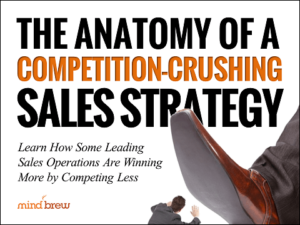If you’ve been in marketing for very long at all, you’ve probably heard the famous quote attributed to John Wanamaker: “Half the money I spend on advertising is wasted; the trouble is, I don’t know which half.”
Apart from this quote, you may know little about Wanamaker. Far ahead of this time, he owned very successful retail stores in New York City, Philadelphia, London and Paris, and he was something of a marketing genius. In 1874, he ran the first half-page newspaper ad, which led to a huge increase in store traffic and sales. He followed it up with the world’s first full-page newspaper ad in 1879. In addition, he pioneered many marketing ideas that have become staples, including the money-back guarantee, the July mid-summer sale and the January white sale. He also hired the world’s first full-time copywriter, a move that doubled his stores’ revenues.
Few of today’s B2B marketers have ever implemented marketing tactics that were anything close to as successful as Wanamaker’s.
If he believed half the money he spent was wasted, how much worse off are we today?
In truth, modern marketers really have no excuse for wasting any dollars given the myriad of ways we have to collect and track metrics thanks to current technology.
But all too often, B2B marketers come up with a brilliant new program or tactic without considering how they will know whether or not it succeeds. Or if they do build in measurement metrics, they track the wrong things. They’re looking at views and open rates and downloads and impressions without really considering how many leads they are generating and how many of those leads are converted into sales.
A few of today’s leading B2B marketers are taking a decidedly different approach. Every time a project is proposed, they first consider its potential return on investment (ROI) and how they will measure that ROI. Instead of holding on to pet projects, they ruthlessly cut any initiatives that aren’t contributing to the organization’s bottom line.
Interestingly, when managers take this approach, it also leads to improvements in morale in the marketing department. Instead of continuing to lament wasted money like Wanamaker and the generations of marketing professionals since him, staffers in these organizations know that they are actually making a quantifiable impact on company revenues. Instead of just believing themselves to be creative and effective, they now have proof. And that sort of success begets future success.
Of course, not every tactic marketers try will succeed. Even the most talented of practitioners has an occasional program that doesn’t live up to ROI predictions. But when organizations build measurement and tracking into everything they do, occasional failures are just part of the process. Over time, these marketers learn from their failures and successes and continually improve their marketing efforts.
Recently, DemandBrew conducted interviews with Liz McClellan, the CMO of North Plains Systems, and Robin Caputo, the CMO of Datavail. These marketing leaders are each pursuing an ROI-first strategy that is yielding measurable results. Both interviews are well worth a listen as they are chock full of advice and strategies that can help B2B companies stop wasting half of their marketing dollars.








